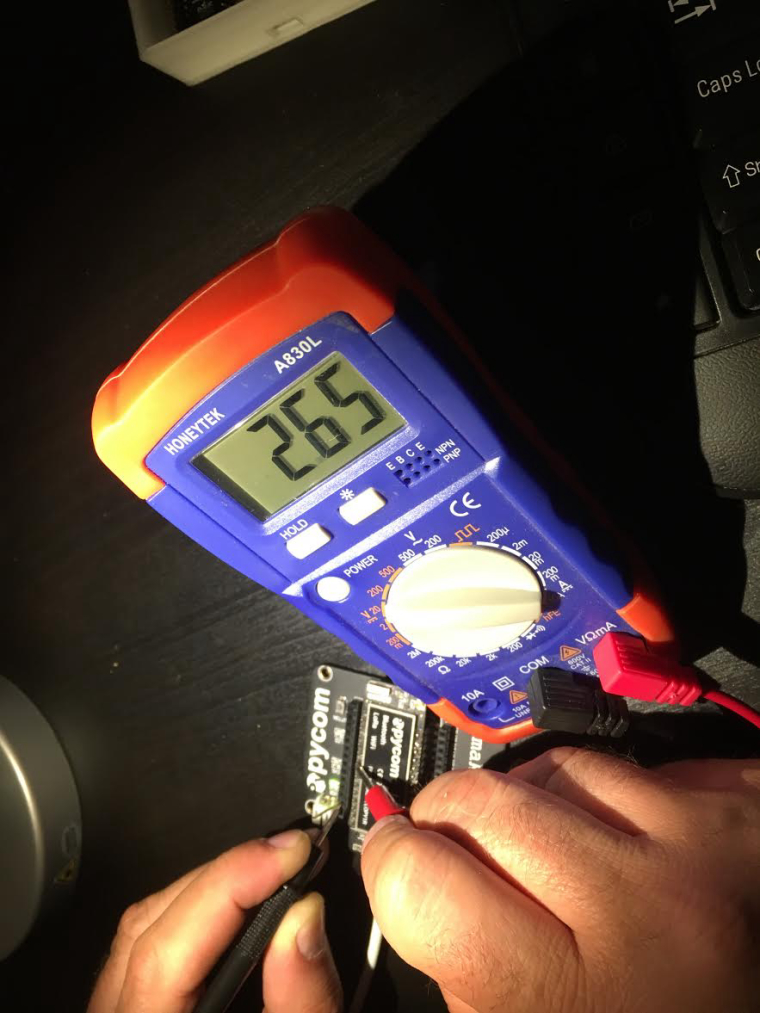LoPy Pin P19 has 2.65V when HIGH
-
I designed my PCB and I realized that P19 cannot trigger NPN transistor because it delivers only 2.65V.
Is it a problem or something by design?
-
@livius
Yes having the main kit board schematics is great, answered my doubts about the 5V regulator and RF switch.I hope we can get one for the expansion board as well, though it's easier to guess what's in there.
Actually what I'd really wish is for an improved expansion board. I started a Expansion Board suggestions thread, please have a read and feel free to add to it if there's anything else bugging you.
-
@robert-hh
We see some progress in this matter but still not enough
https://docs.pycom.io/pycom_esp32/_downloads/OEM-baseboard-schematic.pdfWill be good to see it for all parts
-
@robert-hh
No schematics but you can see the connections in the pinout diagram https://docs.pycom.io/pycom_esp32/_downloads/exp_v03_pinout_v13.pdf
-
@jmarcelino said in LoPy Pin P19 has 2.65V when HIGH:
Expansion Board diagram
Is that or schematics available somewhere. The hardware documentation of the pycom products is a little bit sparse.
-
@constantinos
I had a chance to test this and can confirm what you're see is influence from FTDI_RTS, which - according to the Expansion Board diagram - is connected to P19.If RTS is enabled (by default) in the FTDI driver of the attached computer you see 2.65V when the pin is HIGH, however if you turn off RTS the pin reads a stronger 3.25V. I'm not sure why this happens but you can avoid this by simply removing the jumper labelled RTS from the Expansion Board.
Another way is to set RTS low from the attached computer via the FTDI driver. Both will give you the voltages you expect.
Update: Just remembered that RTS is active low so I can imagine what's happening when RTS is enabled (low,0V) and P19 is high is not a good thing... and neither any other combination for that matter. I think the safest is to remove the jumper unless you really need flow control.
-
I haven't checked on mine, but going by the datasheet the minimum voltage for HIGH is 0.8 * Vio (3.3V) so that would still be within the parameters.
-
@livius Just using the Expansion board and connect a multimeter on P19 and Ground. Nothing else. It is also happening to Wify,
 if that helps.
if that helps.
-
@robert-hh Yes it is ok. If I drive this transistor using another LoPy pin it works. I assume (just assume) that pin P19 does not have enough current....
-
@constantinos
How do yo measure voltage (current should be enough for BC847) - on clear pin or connected to something?
-
@constantinos at 2.65 V at the port pin and 1k resistor you have about 2 mA base current. That is sufficient to drive the BC847. Are you sure that the circuit is ok?
-
@robert-hh It is a BC847. I connect a lot of them with LoPy pins thru a 1K resistor. It is the only one that does not change state. Anyway, 2.65V on HIGH is a serious problem...
-
Sorry, I do not understand your question. A NPN-transistor is switched on by a current between base and emitter. Quite a lot of factors define, how much base current is required, but the base voltage will typically be below 1 V for a single transistor or below 2V for a Darlington type.
If you mean N-Channel Mosfet - these are voltage driven, and the high power models need like 4 V gate- source voltage.
-
@livius (sysname='LoPy', nodename='LoPy', release='1.6.10.b1', version='v1.8.6-556-g989d5ac9 on 2017-03-30', machine='LoPy with ESP32', lorawan='1.0.0')
-
@constantinos
what is youros.uname()
-
It is on the expansion board. All the other Pins are OK.
-
@constantinos
How do you power up your Lopy - and this problem is only for that pin and others work ok?